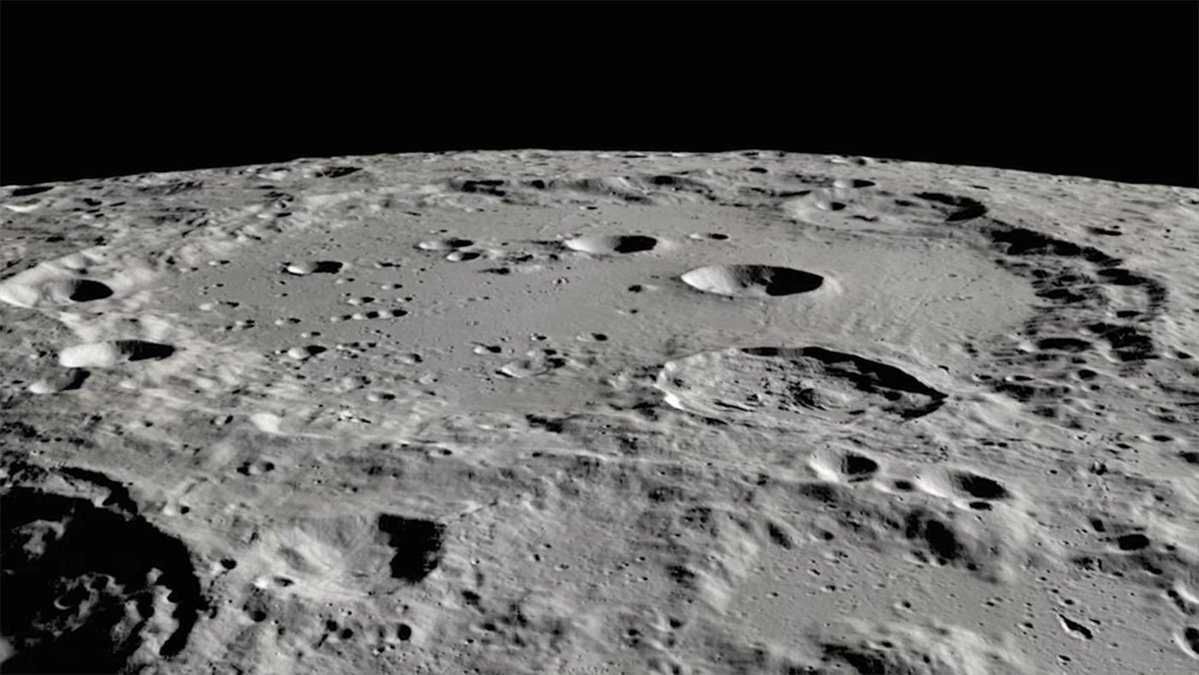In 1972, during the Apollo 17 mission, astronauts Harrison Schmitt and Eugene Cernan collected 243 pounds of lunar dust and rock samples. A new analysis of these samples has revealed zircon crystals, which formed from molten rock. This discovery is helping scientists to better understand the formation of the Moon and its precise age.
The most widely accepted theory for the Moon's formation is that it was created when a Mars-sized object collided with early Earth, blasting molten rock into space. This debris disk eventually coalesced into the Moon. However, the exact timing of this event has been difficult to determine.
So, how old is the Moon?
 Clavius Crater on the Moon. Credit: NASA
Clavius Crater on the Moon. Credit: NASA
A new study published in the journal Geochemical Perspectives Letters in October 2023 suggests that the Moon may be even older than previously thought. The Moon is approximately 4.46 billion years old. This is based on radiometric dating of lunar samples, which involves measuring the decay of radioactive isotopes in rocks and minerals.
The study led by Dr. Philipp Heck, and one of the co-authors Dr. Bidong Zhang, analysed zircon crystals found in lunar samples collected by the Apollo 17 astronauts in 1972. Zircon crystals are very old and durable, and they can be used to date rocks and minerals.
The researchers found that the zircon crystals in the lunar samples formed around 4.46 billion years ago. This is about 40 million years older than the previous estimate for the Moon's age.
Also read: How ISRO's Aditya-L1 is different from NASA's Parker Solar Probe?
How did scientists determine the Moon’s age?
In a previous research study by co-author Dr. Zhang, an assistant researcher in the Department of Earth, planetary, and space sciences at the University of California, Los Angeles, suggested that determining the age of the crystals within the lunar dust might reveal the moon’s actual age as well.
The new study used atom probe tomography, an atomic spatial resolution analysis, to take a nanoscale look at the crystals to understand their chemical composition and assess the rate of decay of the atoms within the zircon crystals to estimate their age.
Also read: What is BTSbot? In A First, Artificial Intelligence (AI) Tool Discovers Supernova
“In atom probe tomography, we start by sharpening a piece of the lunar sample into a very sharp tip, using a focused ion beam microscope, almost like a very fancy pencil sharpener,” said Greer, who was a doctoral candidate at the Field Museum and the University of Chicago when she worked on the study.
“Then, we use UV lasers to evaporate atoms from the surface of that tip. The atoms travel through a mass spectrometer, and how fast they move tells us how heavy they are, which in turn tells us what they’re made of.”
Why is it important to know the age of the Moon?
The Moon is the only natural satellite of Earth that we have been able to sample directly. Studying the age of lunar rocks and minerals can help us to understand when the Moon formed and how it has changed over time. This information can then be used to learn more about the composition of the early Earth as well as the formation and evolution of the Solar System as a whole.
The Moon has played a significant role in the evolution of the Earth. The Moon's gravity helps to stabilize Earth's axis and tides. The Moon keeps the Earth tilted precisely at 23.5 degrees on its axis making it a safe planet to live on. The Moon’s gravity helps to protect Earth from asteroid impacts. It may also have helped to create the early Earth's atmosphere. The Moon's presence may have been essential for the development of life on Earth.
Also read: Chandrayaan-3: Why is it important to land on the South Pole of the Moon?
"The giant impact that formed the moon was a cataclysmic event for Earth and changed Earth's rotational speed. After that, the moon had an effect on stabilizing Earth's rotational axis and slowing down Earth's rotational speed," Dr. Heck said. "The formation date of the moon is important as only after that Earth became a habitable planet."
As per NASA, the Moon’s volcanic activity has been so well preserved that it can help scientists better understand the volcanic processes on Earth. In addition, the Moonquakes can help to understand the seismic activity on Earth during the ice ages or Earth’s early age. Scientists also suggest that the lunar soil could tell how life began on Earth.
Also read: What is NASA’s Dragonfly Mission? Why is NASA Sending Dragonfly To Saturn’s Moon Titan?
Comments
All Comments (0)
Join the conversation